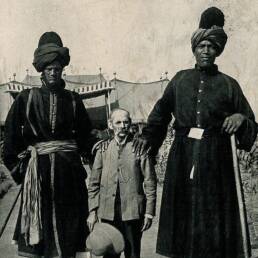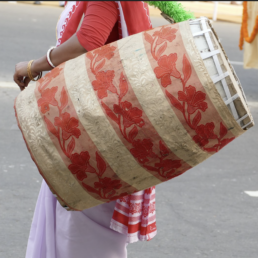A remote village in south-eastern Bali, Indonesia, a bustling city in central Gujarat, India, and the Amami Ōshima, one of the largest islands in the Amami archipelago in Japan, have something in common. A style of weaving that has survived for generations.
In 1928 due to changes in the cotton textile production made by the Japanese government, its prisons in parts of China and Korea were made to produce most of their textiles. The labor put in by the prisoners was part of their punishment.
Some of these fabrics produced in the prisons had a specific style. In Japan it is called Kasuri, a pattern known for its fuzzy and distinct edges and checkered patterns, which interestingly can also be found on a cave mural in Maharashtra, India.
The Padmapani Bodhisattva, one of the most revered paintings in the entire world, is noted for its distinct features. If one looks closely, the fabric depicted have glimpses of the same patterns found on Kasuri clothes.
It’s called Ikat, a weaving style that has survived and thrived in parts of Southeast Asia for many centuries. But where does it come from? Though the word is derived from the Malay-Indonesian word for ‘bind’, its exact origin is unknown.
It is mentioned as early as the 3rd century in a Buddhist text where it is called the Vachitra Patolaka, referring to the Double Ikat style of weaving and widely found in the Patan region of Gujarat in western India.
Ikat is produced using the resist-dye technique. This involves covering up areas of the fabric to prevent those parts from being dyed. Then, several of these threads are grouped and tied, creating knot units in a certain pattern.
The famous Gujarati weave called the Patola is made using the Double Ikat style and is said to have originated in the 12th century during the twilight of the Solanki dynasty.
Silk weavers from the states of Karnataka and Maharashtra are said to have moved to the region under the Solanki patronage.
Many of the migrated people belonged to the Salvi community of Maharashtra and they settled in parts of the Patan region, where these intricately designed patterns over saris and other garments still continue to be created.
Parts of Odisha and Telangana are also famous for using the Ikat style. Odisha Ikat is very different from Gujarat and is particularly famous for its curved lines and motifs inspired by Lord Jagannath. How the Ikat style moved so freely has remained a mystery.
Though Indonesia is often considered to be the birthplace of the Ikat style, the double Ikat style, especially the Gujarati Patola style, emerged during the height of the spice trade in the 17th century.
Many historians believe that the Geringsing, considered sacred cloth in Bali, has an unmissable similarity to the Patola. Tenganan, a remote village in southeastern Bali is now the only place that continues to make unique textiles using Double Ikat.
During the height of the European colonial expansion, the ikat style made considerable waves in parts of Europe, some were bought by traders through various routes, and some were bought by ships on various company payrolls.
Over time, many places developed their own ikat Identity, sadly today only Mallorca in Spain has survived with its distinctive and colorful Ikat culture with many textile houses dating back to the 19th century. It is locally called Roba de llengos meaning cloth of the tongues.
It’s fascinating how culture and migration connect us. A woman who wears a Patola saree in Gujrat and someone who buys household items made of Mallorca Ikat might not know but they are strangely linked through centuries of travel and perseverance.
Sources: Ikat–Tracing The Origins Of A Daunting Art, by Antara Chatterjee, https://www.outlookindia.com/outlooktraveller/explore/story/72452/ikattracing-the-origins-of-a-daunting-art;
Image Attributes: Detail of a classic Gujarati patola of double ikat from the early 19th century, Los Angeles County Museum of Art, from @WikiCommons




